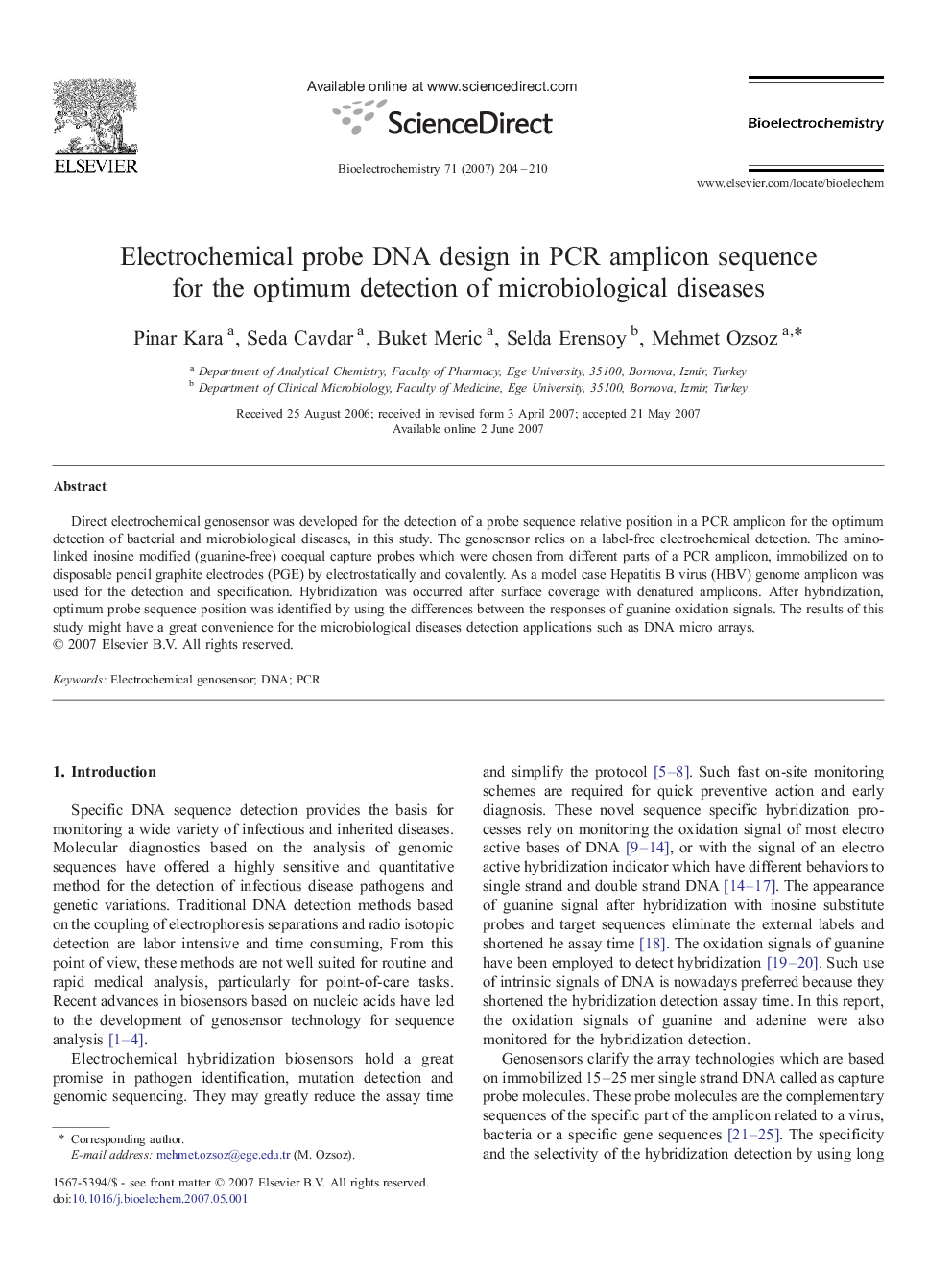| Article ID | Journal | Published Year | Pages | File Type |
|---|---|---|---|---|
| 1269195 | Bioelectrochemistry | 2007 | 7 Pages |
Direct electrochemical genosensor was developed for the detection of a probe sequence relative position in a PCR amplicon for the optimum detection of bacterial and microbiological diseases, in this study. The genosensor relies on a label-free electrochemical detection. The amino-linked inosine modified (guanine-free) coequal capture probes which were chosen from different parts of a PCR amplicon, immobilized on to disposable pencil graphite electrodes (PGE) by electrostatically and covalently. As a model case Hepatitis B virus (HBV) genome amplicon was used for the detection and specification. Hybridization was occurred after surface coverage with denatured amplicons. After hybridization, optimum probe sequence position was identified by using the differences between the responses of guanine oxidation signals. The results of this study might have a great convenience for the microbiological diseases detection applications such as DNA micro arrays.
